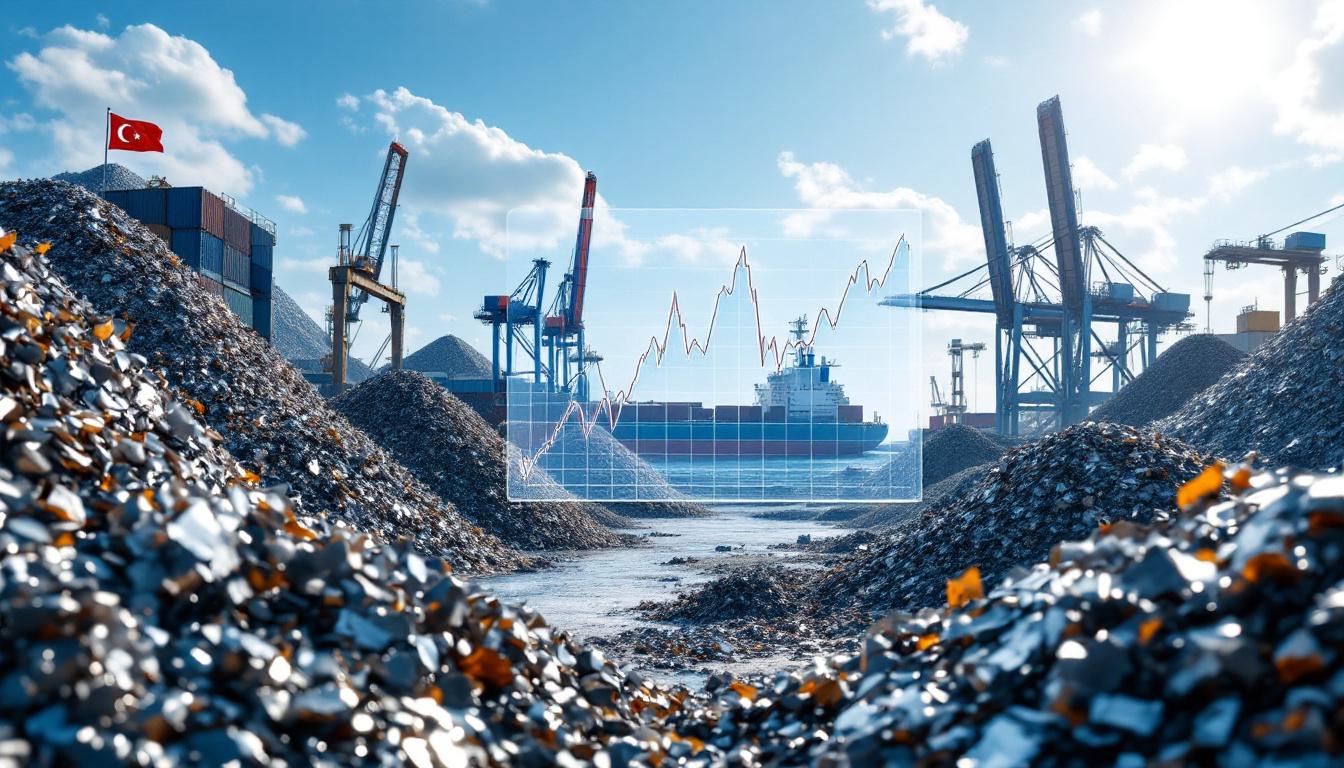what will Trump's inauguration mean for the mining industry 2025 has sparked widespread debate among investors and industry experts. In addition, there is growing interest in ensuring that domestic resources are strategically developed to secure national interests.
Why Are Critical Minerals Essential for Modern Life?
Everything around us is either mined or grown. This fundamental truth underscores the critical importance of minerals in our daily lives. Critical minerals enable our modern transportation systems, advanced technologies, and essential infrastructure—from smartphones to electric vehicles, medical equipment to defence systems.
Furthermore, recent analyses reveal that even energy transitions rely on strategic mining’s crucial and paradoxical role in the clean energy transition efforts. Consequently, these minerals are pivotal in creating sustainable and secure supply chains.
The global supply chain for these minerals exposes some vulnerabilities. Currently, 80% of global nickel production comes from Indonesia. Meanwhile, China refines 95% of the world's antimony, widely used in fire retardants and ammunition.
North America has gradually surrendered its position as a major producer. As Rick Rule, veteran resource investor, notes, "The West has essentially outsourced its mineral security to nations that may not always share our interests." This insight highlights the urgency to reassess resource policies.
How Has China Dominated the Global Minerals Supply Chain?
China has systematically positioned itself as the primary capital provider for natural resource projects over the past 10-15 years. In addition, Chinese financing offers significantly lower costs of capital compared to Western sources, thereby securing controlling interests in mining operations globally.
For instance, China’s competitive financial advantages have allowed firms to invest in projects across Africa, South America, and Southeast Asia. However, this trend has given rise to concerns over geopolitical risks. Western policymakers increasingly question the balance of power in global resource management.
Moreover, while Western investors have prioritised technology sectors, China has invested in mines. As one industry expert observed, "The West has been investing in apps while China has been investing in mines." This growing gap underscores a shift in global strategic investments.
What Changes Can We Expect Under Trump's Administration?
Trump’s return to power has renewed debates on what will Trump’s inauguration mean for the mining industry 2025. The administration is expected to focus on domestic resource development as a matter of national security. Consequently, permitting processes that delay project development could be streamlined.
For example, Perpetua Resources recently received over $1 billion in government funding to develop antimony production at its Stibnite project in Idaho. This milestone mirrors the approach outlined in how trump's policies are reshaping global commodity markets.
Furthermore, industry analysts foresee tax incentives and additional support mechanisms. In addition, Trump's "america first" policy may amplify awareness of mineral sovereignty. Notably, these policies could help foster confidence among investors.
There are speculations about strategic moves involving mineral-rich regions like Greenland. As one insider noted, "Trump understands that whoever controls the minerals controls the future." This statement reinforces the strategic significance of domestic projects.
Which Critical Minerals Present the Best Investment Opportunities?
Several critical minerals present unique opportunities for investors:
- Copper: Essential for infrastructure and electrification. Demand is set to double by 2035. Recent trends are discussed in exploring top copper mines: production trends and industry insights.
- Nickel: Demand from the battery sector is putting pressure on supply.
- Antimony: Critical for defence applications, with 95% refining conducted by China.
- Gallium and germanium: Essential for electronics and semiconductors.
- Uranium: Crucial for baseload power, particularly for data centres.
- Natural gas: Vital for both power generation and petrochemicals.
In addition, these minerals are fundamental to advancing modern infrastructure. This bullet-point list summarises key sectors that will benefit from ongoing reforms.
How Should Investors Approach the Critical Minerals Market?
Investors should view junior mining stocks as "options" on underlying commodities. In other words, they are akin to financial options that experience "time decay." Consequently, operational costs can erode profits if projects fail to progress.
Furthermore, minor metals exhibit extreme price volatility. For example, gallium’s annual production values range between $200-300 million. Thus, its market can see dramatic price swings. In contrast, copper projects typically take 7-10 years to develop, which provides a more stable investment horizon.
Additionally, thematic investing represents a powerful strategy. For instance, the growth in AI and data centres drives demand for energy minerals. Transitioning to this approach can offer exposure to a broader range of supply chain dynamics, including junior mining investments: navigating risks and rewards in mineral exploration.
Moreover, investors should focus on undervalued projects in North America. Markets with projects trading at fractions of capital invested present significant upside. Therefore, nimble investing may yield effective outcomes in a volatile market.
What Role Does National Security Play in Critical Mineral Development?
Global conflicts and diminishing stockpiles of military supplies have heightened national security concerns. For instance, some NATO countries now reportedly hold only 10-day munitions supplies compared to historic 6-12 month reserves. Consequently, this vulnerability necessitates rebuilding strategic stocks.
The United States once maintained large stockpiles but has long abandoned the practice. However, there is renewed discussion about re-establishing reserves for defence-related materials. In addition, government intervention through projects such as government investment in australia’s critical minerals sector could transform the market.
Defence needs are now driving domestic production. As one defence analyst noted, "You can't fight a war with materials you don't control." Therefore, the urgency to bolster critical supplies is greater than ever.
How Will Canada Respond to Critical Mineral Challenges?
Canada faces similar challenges as the US concerning critical minerals. Despite possessing world-class deposits, regulatory frameworks often impede rapid project development. For instance, projects in British Columbia can take over a decade to permit.
Furthermore, American pressure may spur Canadians to expedite production. In addition, the integrated nature of the North American defence industry makes Canadian output highly significant. Therefore, any regulatory reforms in Canada could unlock billions in latent value.
Industry observers have highlighted the potential for cross-border collaboration. They suggest that improvements in permitting could create a more attractive investment climate. As a Canadian mining executive stated, "We have world-class deposits sitting idle while we import the same materials from less regulated jurisdictions." This sentiment underscores the need for change.
What Practical Steps Should Mineral Investors Take Now?
Investors are advised to research TSX Venture and CSE exchanges for undervalued companies. They should consider strategic projects in North America that might benefit from upcoming regulatory reforms.
A few recommendations include:
- Focus on assets within key states such as Idaho, Nevada, Wyoming, and Alaska.
- Look for market inefficiencies between project quality and market capitalisation.
- Consider the difference between long-term assets like copper and more volatile options in minor metals.
In addition, some external analyses report that trump's energy priorities explained offer insight into shifting market dynamics. These insights enhance investors' perspectives on market timing and strategic positioning.
What Are the Long-Term Implications for Global Mineral Supply Chains?
There is a global trend towards nationalism and resource sovereignty. Consequently, governments are reshaping their policies to secure critical mineral supply chains. In addition, these shifts represent significant multi-decade investment opportunities.
For instance, reshoring refining capacity to North America is a strategic priority. This is supported by industry experts who emphasise that mining is only half the battle. Both extraction and processing capacity are essential in creating a secure supply system.
Furthermore, government interventions through investments, stockpiling, and regulatory support can accelerate project development. This policy shift could lead to dramatic valuation increases, particularly as projects reclaim market share from dominant suppliers.
The future dynamics of resource control will depend on how swiftly governments act. Notably, what will Trump's inauguration mean for the mining industry 2025 is expected to be a recurring point in policy debates. This discussion may well influence global market strategies for years to come.
FAQs About Trump's Impact on Mining
What defines a critical or strategic mineral?
Materials essential to economic and national security, often with supply chain vulnerabilities. The official US list includes 50 minerals, emphasising battery metals, rare earths, and defence-related materials.
How quickly could permitting reforms impact project development?
Perpetua Resources is a prime example. Rapid government support moved it from regulatory limbo to receiving over $1 billion in funding within two years. This swift turnaround may set a precedent for future critical projects.
Will tariffs significantly impact the mining sector?
Tariff discussions currently seem more about positioning rather than immediate action. Nevertheless, targeted tariffs on processed minerals could stimulate domestic refining capacity.
Which jurisdictions in North America are most promising for mining investment?
Regions like the Rocky Mountain states, British Columbia, Alaska, and even California offer tremendous potential. Regulatory reforms in these areas could unlock significant value.
How will AI and data centre growth affect mineral demand?
The exponential rise in power consumption is set to drive demand for minerals, including uranium and natural gas. Notably, what will Trump's inauguration mean for the mining industry 2025 becomes a key theme as AI and data centres require 10-20 times more copper than conventional buildings.
In conclusion, the evolving landscape for critical minerals intersects closely with political, economic, and technological trends. Investors and policymakers alike must remain alert as new policies reshape global supply chains.
Want to Catch the Next Big Mineral Discovery Before Everyone Else?
With the mining industry poised for transformation in 2025, don't miss potentially lucrative opportunities in critical minerals and domestic production. Stay ahead of market movements with real-time alerts on significant ASX mineral discoveries through Discovery Alert's proprietary Discovery IQ model at https://discoveryalert.com.au/discoveries/.




